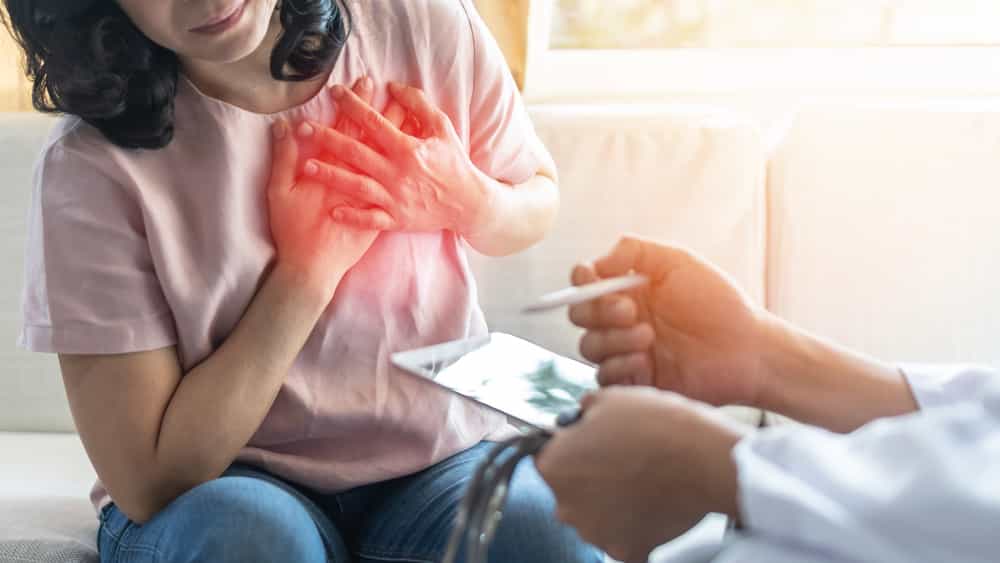Types and diagnosis

As noted above, heart murmurs should be evaluated according to their timing, duration, character, irradiation, and other characteristics. That is the only way to take out information from them and use them to diagnose one of the diseases mentioned above.
We have different types of murmurs depending on when and where they appear. Thus, timing is fundamental for the differential diagnosis. We have systolic murmurs between the first and second heart sound or diastolic murmurs when they occur after the second heart sound and before the first sound of the next heartbeat. They can have different intensities depending on how loud they are.
- Systolic murmurs are caused by ventricular ejection problems or a mechanical issue with the systole. We can say that they are subdivided into two types: mid-systolic and holosystolic murmurs. The former has a crescendo or decrescendo sound (starting louder and decreasing intensity or vice versa), and the latter has the same intensity throughout the systole. The former is caused by valve stenosis in the aortic or pulmonic artery, and the latter is formed by valve regurgitation or a septal defect in the ventricular cavity.
- Diastolic murmurs are associated with a defect in filling the heart or a relaxation issue in the heart muscle. This type of murmur usually goes in a decrescendo and may or may not increase sound intensity at the end. They are caused by valve regurgitation in the aortic or pulmonic arteries or stenosis in the tricuspid or mitral valves.
The right way to diagnose the heart murmur’s timing requires listening to the murmur with a stethoscope, locating the point of maximum intensity, and palpating the carotid pulse at the same time. Every stroke of the carotid artery marks the start of the systole. Depending on how the examinator hears them, heart murmurs can have different intensities:
- Grade I when it is only heard in a very quiet room by an experienced doctor
- Grade II when it is easily heard by most doctors regardless of their experience
- Grade III when it is a loud murmur but does not cause a thrill
- Grade IV when it is a loud murmur and causes a thrill
- Grade V when the thrill is very noticeable, and the murmur can be heard by lightly placing the stethoscope on the chest
- Grade VI when the thrill is very noticeable, and the murmur can still be heard with a slight separation between the chest and the stethoscope.
Another fact of significant importance to diagnose this type of sound is the location of maximum intensity. Upon detecting a heart murmur, doctors would place the stethoscope in different chest areas to locate where it is heard the loudest. These areas are well-defined in physical medical exams. They include the aortic area, pulmonary area, tricuspid area, the heart’s apex, the heart’s base, the axilla, and the fourth left intercostal space. After locating the sound precisely, doctors also need to know if the sound radiates to other areas, usually the heart’s base or the axilla in mitral regurgitation and the left sternal border, the carotid arteries, or another blood vessel in aortic stenosis.
Another aspect of murmurs that contributes to the diagnosis is the character and the pitch. Some of them are high-pitched and more easily to be heard. Others are low-pitched and slightly difficult to perceive. They can have different characters or qualities, such as rumbling sounds, a blowing murmur, and a harsh, cooing, or musical character.
Finally, some doctors include a type of dynamic auscultation in the exam in which they evaluate the heart murmur in different positions and with a variety of maneuvers. They may ask the patients to inspire deeply, expire deeply, squat or stand up, raise a straight leg, and sometimes inhale a vasodilator substance known as amyl nitrate. These maneuvers, and comparing what happens with the sound in each case, give the examiner enough information to locate the source of the problem and order appropriate exams to confirm their findings.
